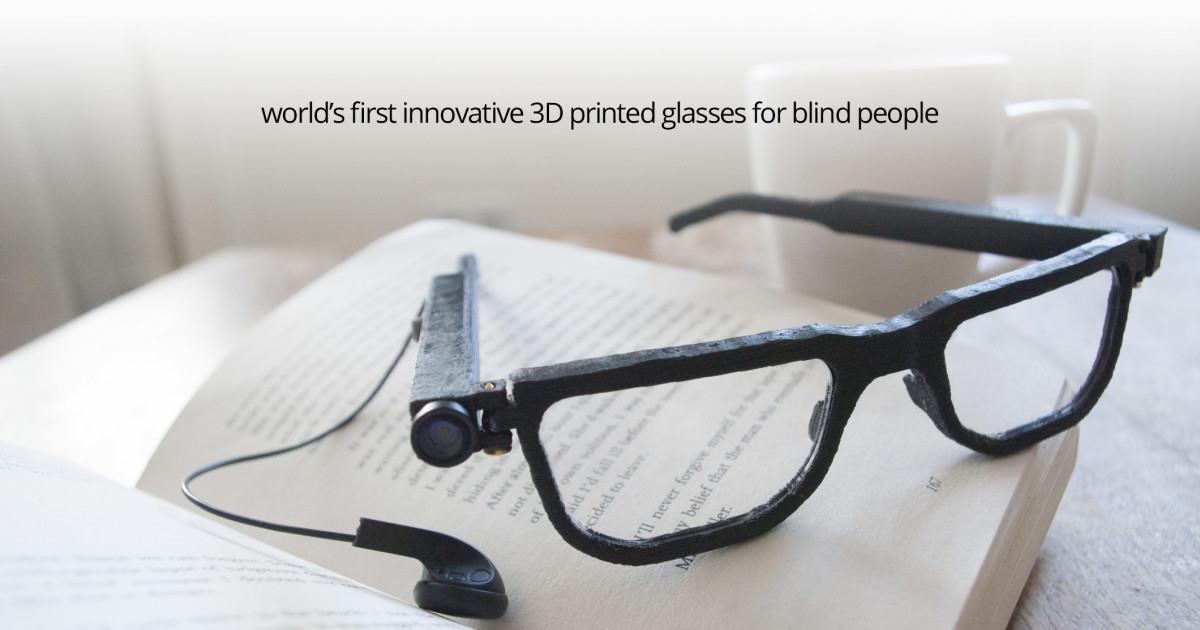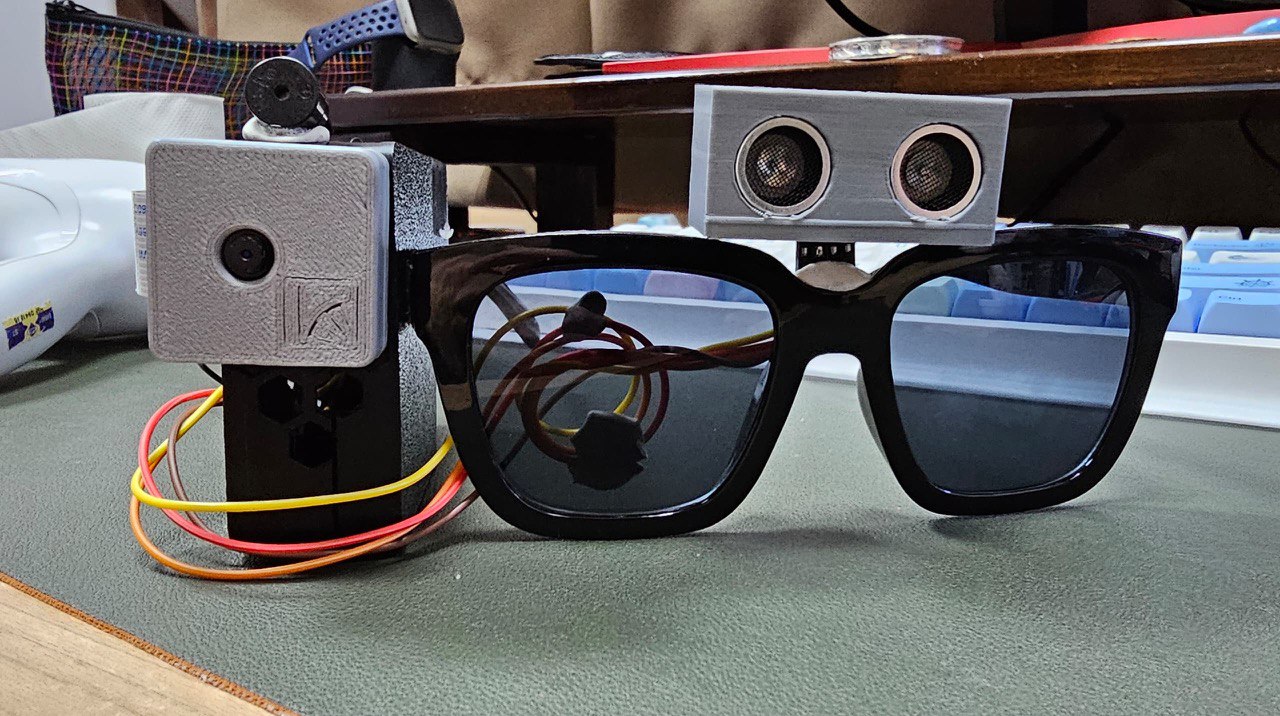The Future of Assistive Technology for the Blind: Empowering Independence
The Future of Assistive Technology for the Blind: Empowering Independence
Blog Article
Empowering Self-reliance With Assistive Modern Technology for the Blind
The assimilation of assistive modern technology for individuals that are blind or visually impaired represents a considerable innovation in cultivating independence and boosting top quality of life. With a variety of devices-- from screen readers to innovative responsive devices-- these innovations not just promote navigating and communication however also promote social incorporation and engagement in different aspects of life. As we explore the diverse types of assistive tools and their real-world applications, it becomes clear that the influence is profound. The evolution of this modern technology increases vital questions regarding ease of access and future developments that require further examination.
Comprehending Assistive Modern Technology
Although assistive technology has evolved dramatically over the years, its fundamental purpose stays the same: to boost the high quality of life for people with specials needs, specifically those that are visually impaired or blind. This innovation encompasses a wide array of devices and devices that facilitate freedom and performance in daily activities.
Assistive modern technology can be categorized right into low-tech and high-tech services, each created to fulfill specific requirements. State-of-the-art devices frequently include software applications, specialized equipment, and adaptive gadgets that use advanced modern technology to offer support in various contexts. Alternatively, low-tech services might entail everyday things that are changed to enhance availability, such as magnifiers or tactile markers.
The combination of assistive technology into the lives of individuals that are blind or aesthetically impaired not only promotes autonomy yet additionally fosters social inclusion and engagement in expert and instructional settings. By leveraging these innovations, users can navigate their environments, gain access to information, and communicate successfully, thereby enhancing their overall quality of life. Recognizing assistive innovation is crucial for caregivers, advocates, and specialists that intend to sustain people in optimizing their prospective and accomplishing better self-reliance.
Kinds Of Assistive Devices
Assistive devices for the blind and visually impaired are vital tools that improve daily living by attending to certain challenges encountered by individuals. These gadgets can be extensively categorized right into three primary kinds: optical gadgets, electronic tools, and sensory tools.

Sensory devices, such as Braille displays and tactile maps, give alternative methods to receive information. Braille displays transform digital message into Braille, making it possible for users to go through touch. Tactile maps supply spatial understanding via raised appearances and lines, enabling for much better ecological understanding.
With each other, these assistive tools equip individuals with visual disabilities to engage more totally with their environments, advertising higher self-reliance and confidence in daily tasks.

Effect On Life
The assimilation of assistive technology right into the every day lives of individuals that are aesthetically damaged or blind considerably boosts their ability to navigate and connect with the globe around them. Gadgets such as screen viewers, Braille presents, and mobile applications assist in accessibility to info, allowing individuals to involve with digital material, interact efficiently, and take care of daily jobs separately.
Moreover, innovations like smart glasses and navigation apps supply real-time help in strange settings, boosting mobility and self-confidence. These devices allow customers to identify obstacles, reviewed signs, and also identify faces, hence promoting a feeling of freedom in public spaces. Furthermore, home automation systems, which can be controlled through voice commands, permit individuals to handle their living environments much more successfully, improving comfort and safety.
The effect of assistive technology extends past useful jobs; it promotes social inclusion and psychological wellness. By connecting the gap in between individuals and their surroundings, these modern technologies encourage redirected here users to take part completely in neighborhood activities, seek educational chances, and participate in purposeful relationships. Inevitably, the advancement of assistive modern technology contributes in redefining the possibilities for people that are visually damaged or blind, leading to a more easily accessible and comprehensive society.
Success Stories and Reviews

An additional powerful testimony comes from Mark, a recent college grad who utilized screen reading software program throughout his scholastic trip. This modern technology enabled him to gain access to course products and join conversations, ultimately causing his effective shift into the labor force. Mark credit scores assistive innovation for encouraging him to attain his occupation objectives, emphasizing its function in leveling the having fun field for people with aesthetic problems.
Additionally, community facilities have actually reported increased participation in their programs thanks to the intro of available electronic platforms. These systems have actually made it easier for individuals to connect, share sources, and support each other. These success stories collectively underscore the extensive impact of assistive innovation in promoting independence, enhancing top quality of life, and damaging down barriers for the visually damaged and blind community.
Future Patterns in Assistive Tech
Emerging modern technologies are positioned to revolutionize the blog here landscape of assistive tech for individuals that are visually impaired or blind. Innovations in expert system (AI) and artificial intelligence are enhancing the capacities of tools, enabling more user-friendly individual experiences. AI-driven applications are increasingly able to read and acknowledge items text out loud in what does an optometrist do real-time, supplying individuals with important details regarding their surroundings.
Furthermore, improvements in wearable innovation are developing brand-new opportunities for self-reliance. Smart glasses outfitted with increased fact attributes can overlay essential info onto the individual's line of vision, promoting navigation and interaction with the atmosphere. Furthermore, the combination of Internet of Points (IoT) gadgets is simplifying access in wise homes, allowing customers to manage appliances and get alerts through voice commands or responsive user interfaces.
The advancement of braille displays and responsive responses systems is likewise rising, advertising accessibility to digital material and improving interaction. As these innovations proceed to develop, they guarantee to enhance daily living, instructional chances, and employment prospects for people with aesthetic disabilities. Constant partnership in between engineers, individuals, and advocacy groups will be essential in ensuring these developments fulfill the requirements of the neighborhood efficiently.
Conclusion
To conclude, assistive technology plays a crucial function in boosting the freedom of people who are aesthetically impaired or blind. By giving necessary tools and resources, these innovations assist in improved access, navigation, and communication to details, thus cultivating freedom and self-confidence. The transformative influence of assistive tools not just advertises reliable communication with the setting however additionally encourages social addition and involvement in different aspects of life, inevitably empowering users to grow within their areas.
The integration of assistive technology for people that are aesthetically impaired or blind stands for a substantial advancement in promoting independence and boosting quality of life.The assimilation of assistive innovation right into the lives of people who are blind or visually harmed not just advertises freedom yet also promotes social incorporation and engagement in educational and professional atmospheres. Inevitably, the development of assistive technology is instrumental in redefining the opportunities for people that are blind or visually impaired, leading to an extra accessible and comprehensive culture.
Many individuals that are blind or aesthetically impaired have shared motivating success tales that highlight the transformative effect of assistive modern technology on their lives.In conclusion, assistive innovation plays a crucial role in improving the self-reliance of individuals that are blind or visually impaired.
Report this page